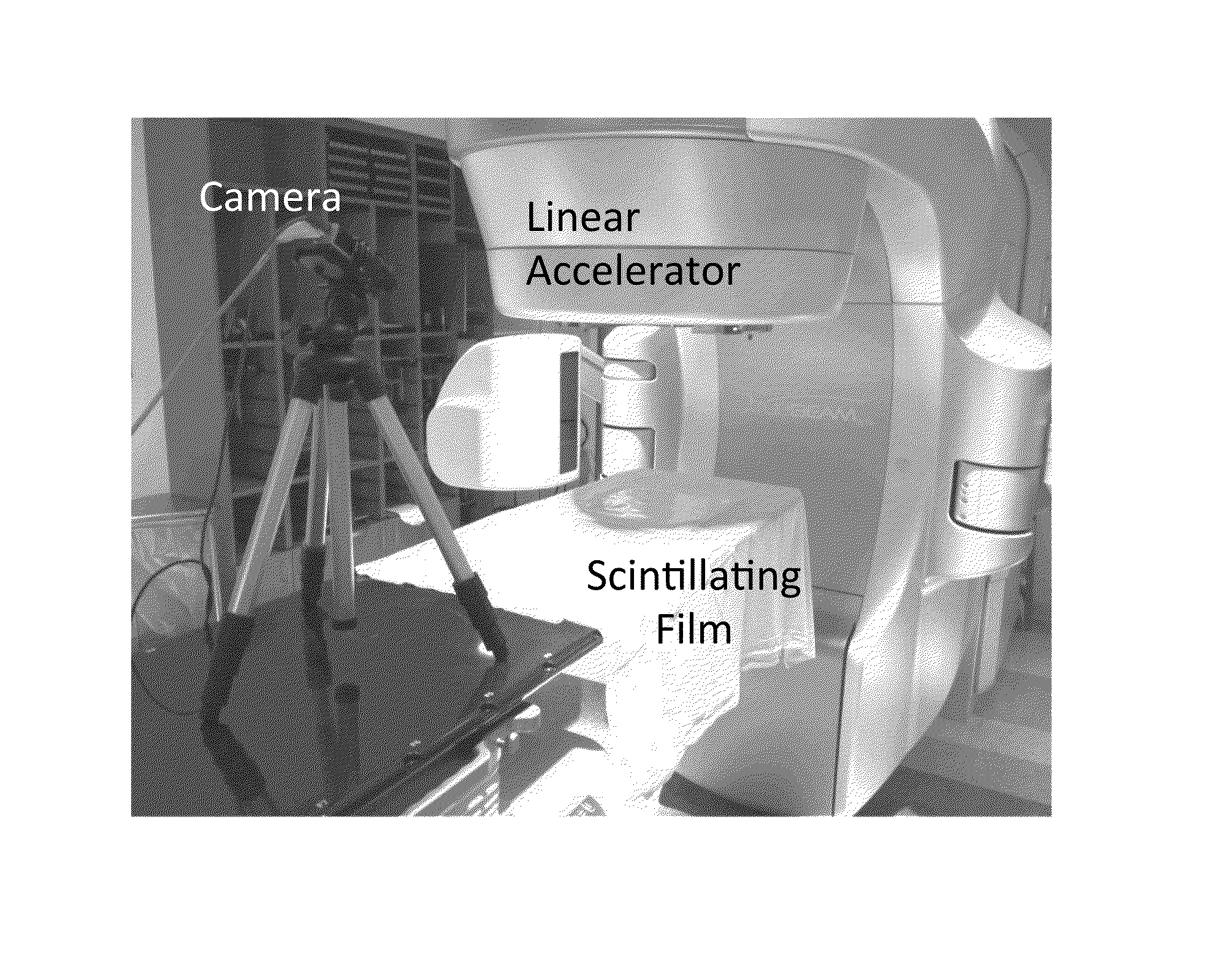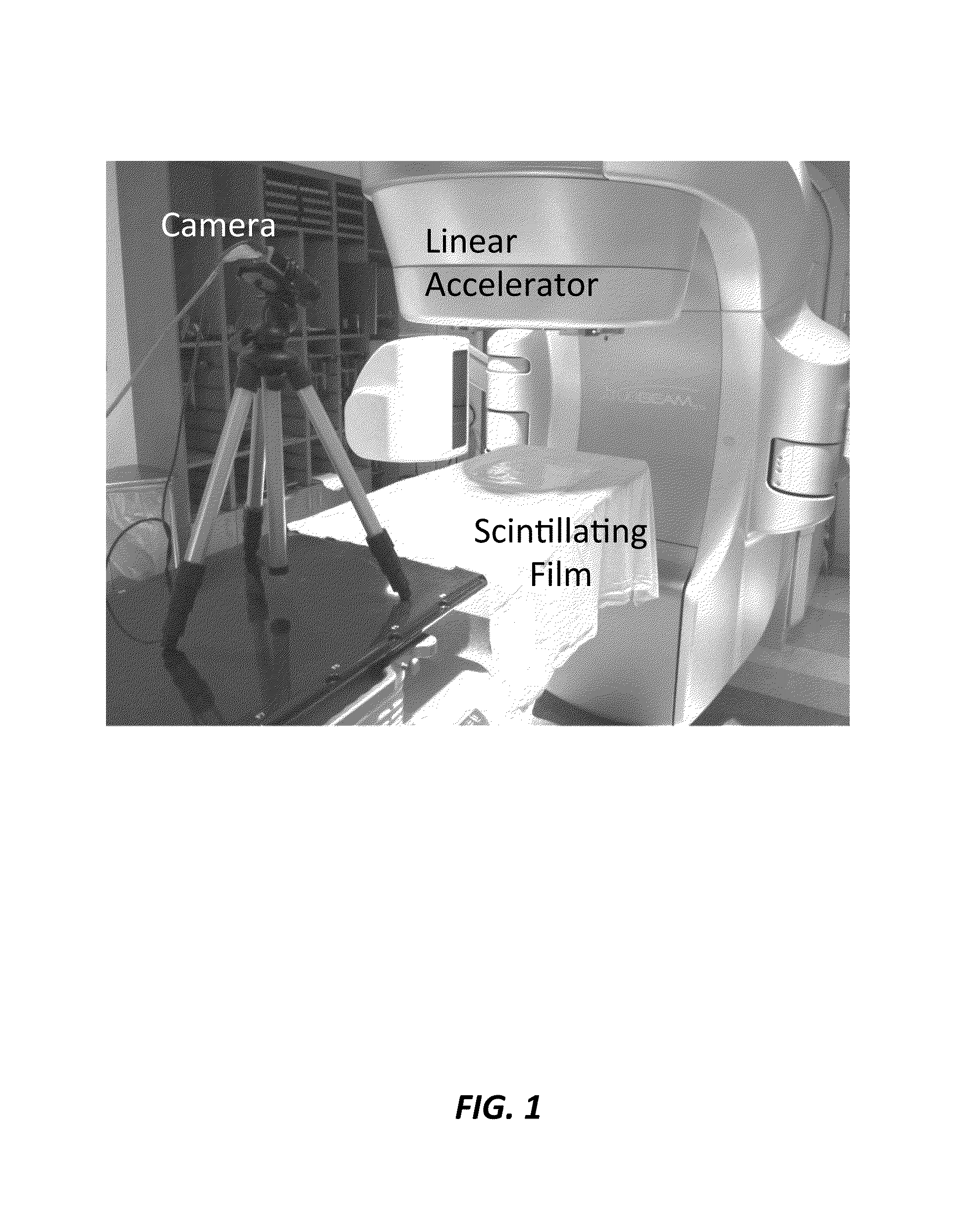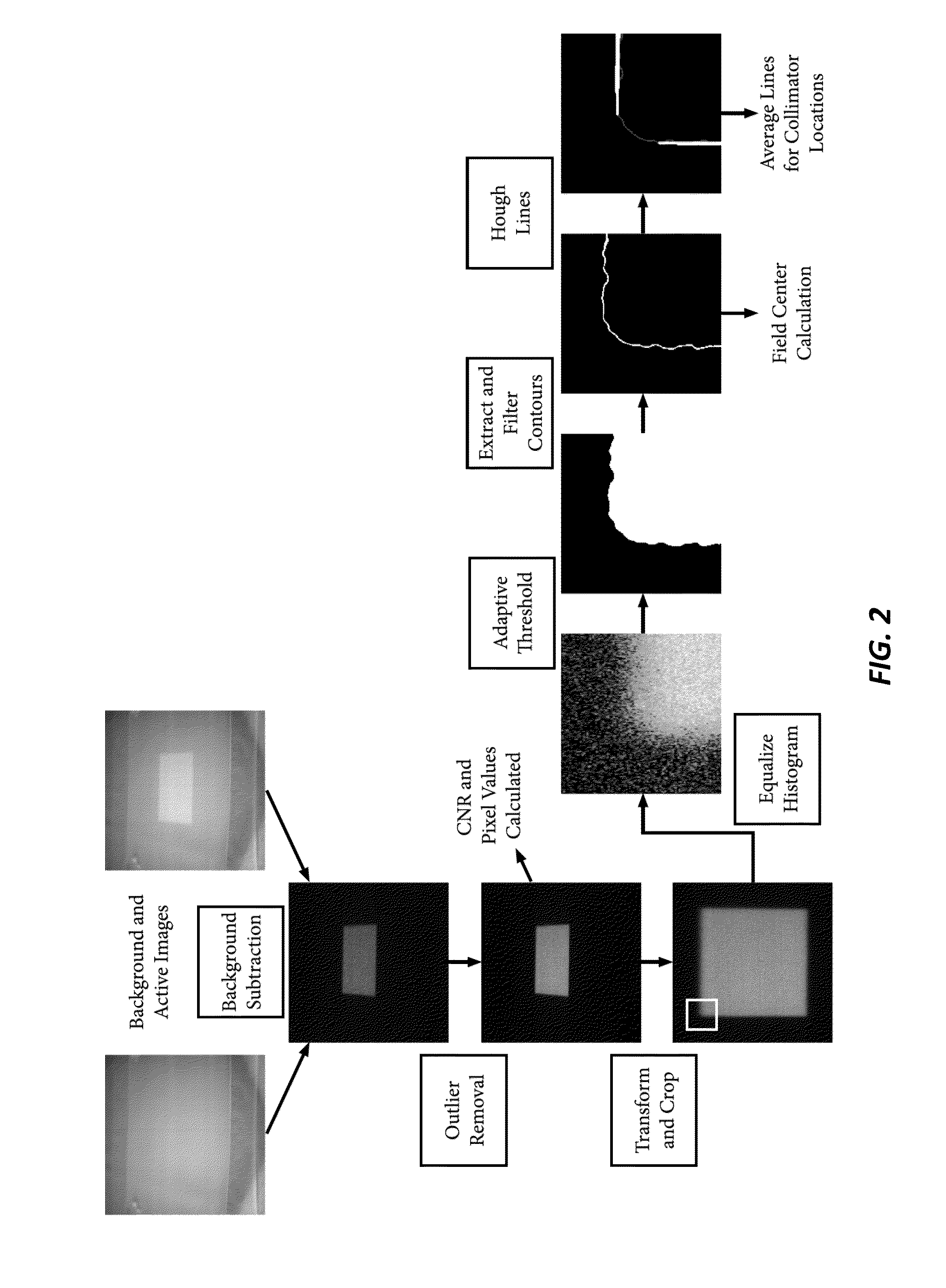Visualizing Radiation Therapy Beam in Real-Time in the context of Patient's Anatomy
a radiation therapy and anatomy technology, applied in the field of radiation therapy, can solve the problems of unacceptable risk for patients and healthcare providers, underdosing or overdosing patients, and affecting the patient's anatomy
- Summary
- Abstract
- Description
- Claims
- Application Information
AI Technical Summary
Benefits of technology
Problems solved by technology
Method used
Image
Examples
Embodiment Construction
[0040]The current invention is a real-time beam visualization (RT-BV) system and method that includes of a flexible scintillating film and a camera. In one embodiment, the film is placed on a patient's skin such that it will emit an optical signal when the beam passes through it. The camera is arranged such that it can image the emitted signal as well as the surrounding patient surface anatomy. An exemplary embodiment is provided herein that includes characterization and integration of the RT-BV system for application in a RT treatment room. An image-processing algorithm was developed to demonstrate how the data from the RT-BV system could be analyzed and interpreted to provide quantitative treatment verification, as well as to aid in assessing the quality of the data from the system.
[0041]According to one embodiment, a method of real-time radiotherapy beam visualization is provided that includes disposing a free-form flexible scintillating sheet on a subject of interest, irradiatin...
PUM
 Login to View More
Login to View More Abstract
Description
Claims
Application Information
 Login to View More
Login to View More - R&D
- Intellectual Property
- Life Sciences
- Materials
- Tech Scout
- Unparalleled Data Quality
- Higher Quality Content
- 60% Fewer Hallucinations
Browse by: Latest US Patents, China's latest patents, Technical Efficacy Thesaurus, Application Domain, Technology Topic, Popular Technical Reports.
© 2025 PatSnap. All rights reserved.Legal|Privacy policy|Modern Slavery Act Transparency Statement|Sitemap|About US| Contact US: help@patsnap.com



